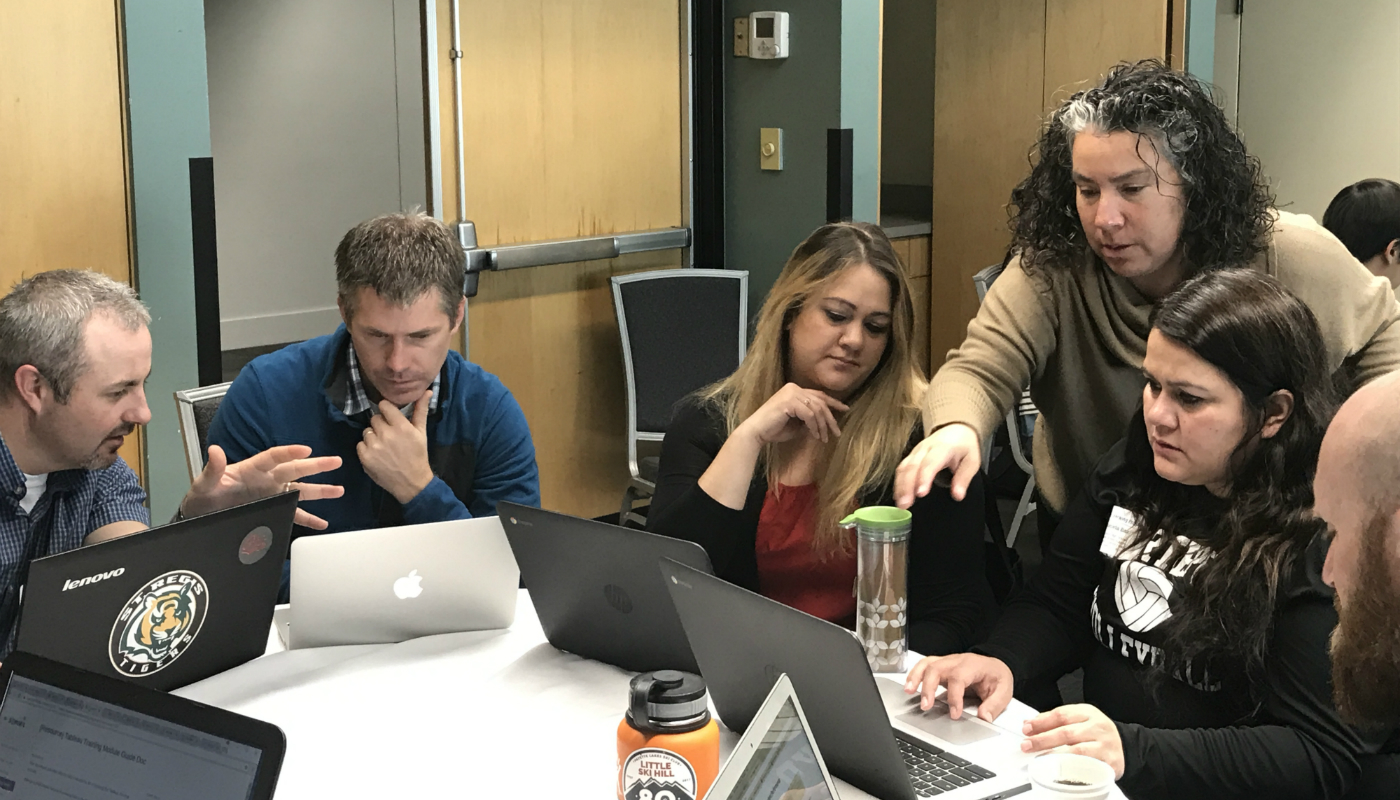
Fall is a critical time for educators. Around week 10 of school, students establish patterns that are typically hard to change later in the year, according to data presented at this year’s Summit Learning fall regional convenings. Without quality interventions, these achievement gaps tend to remain constant the rest of the year.
“The time to act is now,” Kelly Garcia, a Summit Learning mentor, told more than 100 educators who gathered in Spokane, Washington last week for one of 14 Summit Learning trainings held across the country in October.
Using data to improve student learning was a key theme across many sessions during the two-day conference at the Spokane Convention Center. School leaders and teachers from 23 Summit Learning schools in Washington, Idaho, Montana, California, and Alaska worked to find appropriate interventions based on their data.
“Data is information to drive action,” Garcia told attendees, and many teachers wasted no time taking action on the first day of the convening.
Bryant Center Uses Data To Set Targeted Goals
Natalie Rogers, math and computer science teacher at Bryant Center, a K-12 alternative school part of Spokane Public Schools, classified her school as having a “positive data culture.”
“I love numbers,” said Rogers, a teacher for five years.
Bryant Center is in their first year of Summit Learning implementation but is already actively using data to inform their instruction. Based on advice from Bryant Center’s Summit Learning Mentor, Angela Moncada, Rogers created a spreadsheet to track important milestones in the first weeks of implementation, such as how many students have taken and passed a content assessment.
Using this data, Bryant Center teachers set goals during the convening to improve project completion rate by 25 percent and boost the number of students on-target for focus areas by 14 percent.
“We’re always looking for ways to improve, especially since we are in year one [of the Summit Learning Program],” Rogers said.
Real-time data drives improved performance and motivation for some Bryant students as well, Rogers said. She offered one anecdote of a student who has already passed his focus areas for English and Geometry and set a goal to pass all other core subjects by winter break.
“His conversations have changed from last year saying, ‘Where do I turn this in?’ to ‘Hey, can you tell me more about the French Revolution?’ ” Rogers said.
How Educators Are Improving Mentoring With Data
One thing missing from Bryant Center’s data was mentoring insights. As a result, school leaders had to guess how many teachers met weekly with their mentees.
Realizing this, Rogers took action to create a new spreadsheet for tracking mentor meetings while at the Spokane convening. The Bryant Center team set a goal to mentor 100 percent of students weekly by the end of this November.
Brett Joachim, a teacher at Springdale Middle School in Springdale, Washington, created a Google form to track his mentor conversations. With his new insights, he can quickly identify trends in student performance based on attitudes and dispositions in their mentoring meeting and work to alleviate struggles.
“Data is everything,” said Joachim, a teacher for 14 years. “I think we can all qualify the value of mentoring, this just gives more of a whole picture.”
As is typical among collaborative Summit Learning communities, Joachim shared his mentor tracking form with other schools who plan to use it.
Using Data To Differentiate Instruction
Kris Herda, principal at Wellpinit School District, said data helps his teachers differentiate their instruction based on student need. For instance, the district’s middle-school teachers are focused on supporting students in passing focus areas, an area in which the data suggested they needed additional scaffolds. Meanwhile high-school teachers spend more time targeting project time checkpoints to help keep students on track.
Rogers said that for her, differentiation through data is the most powerful aspect of the Summit Learning Program.
“We already differentiate a lot in the classroom, but the ability to put it all in one place and have organized year over year was huge for us,” she said. “If I have a student that is behind on a certain cognitive skill, I can quickly assign it.”
Some schools were new to data-driven instruction, but all left the convening with actionable steps to use data more effectively.
“For the first time for many of you, you have data,” Garcia said during a breakout session. “You have data that is staring you in the face about what your kid can and cannot do, and you have to use that data.”
This post is part of our Fall Regional Convening coverage. Read more about Summit Learning teacher trainings in Chicago and Oklahoma City.

